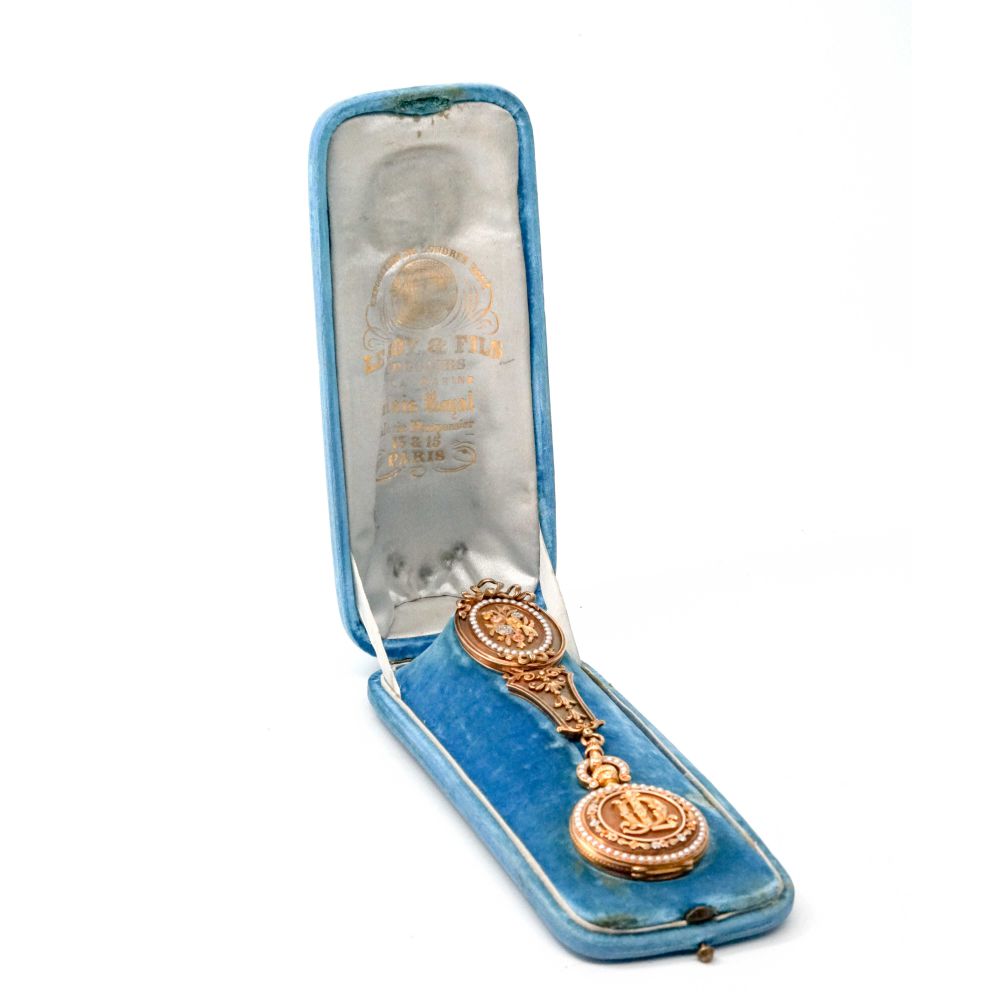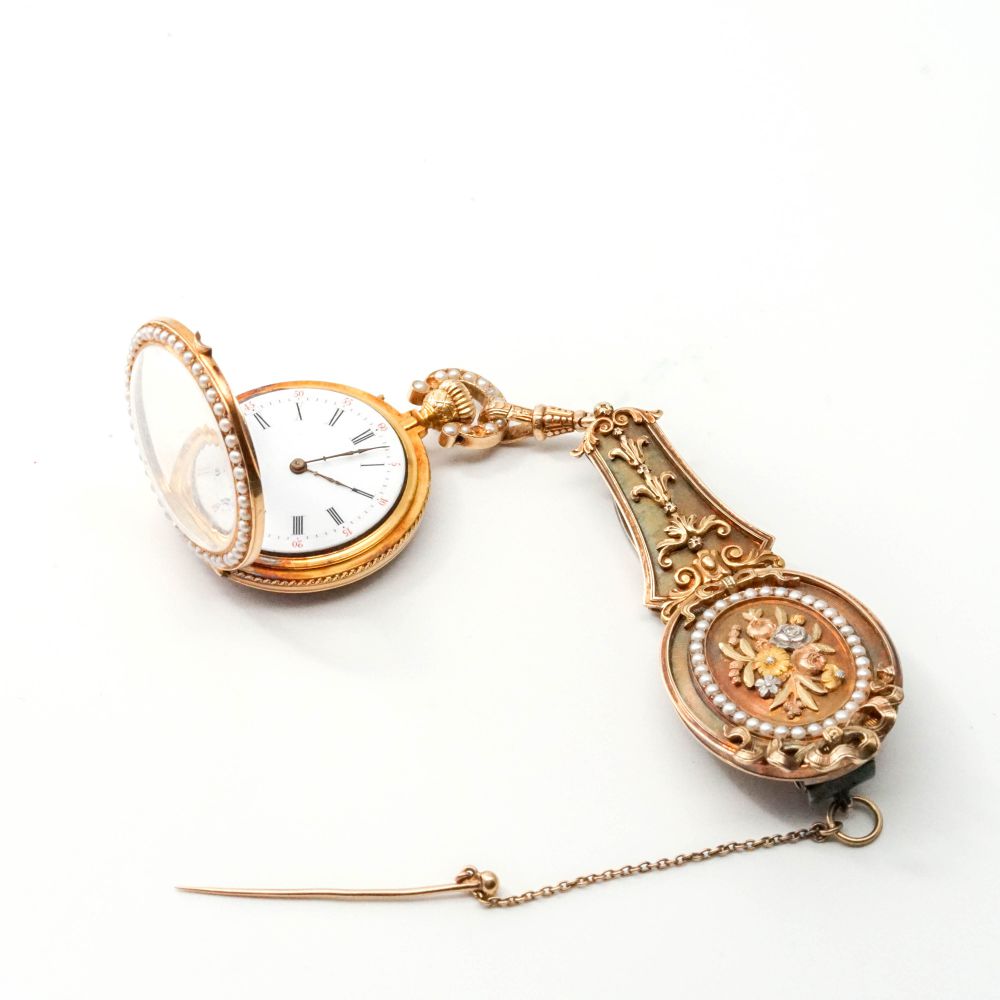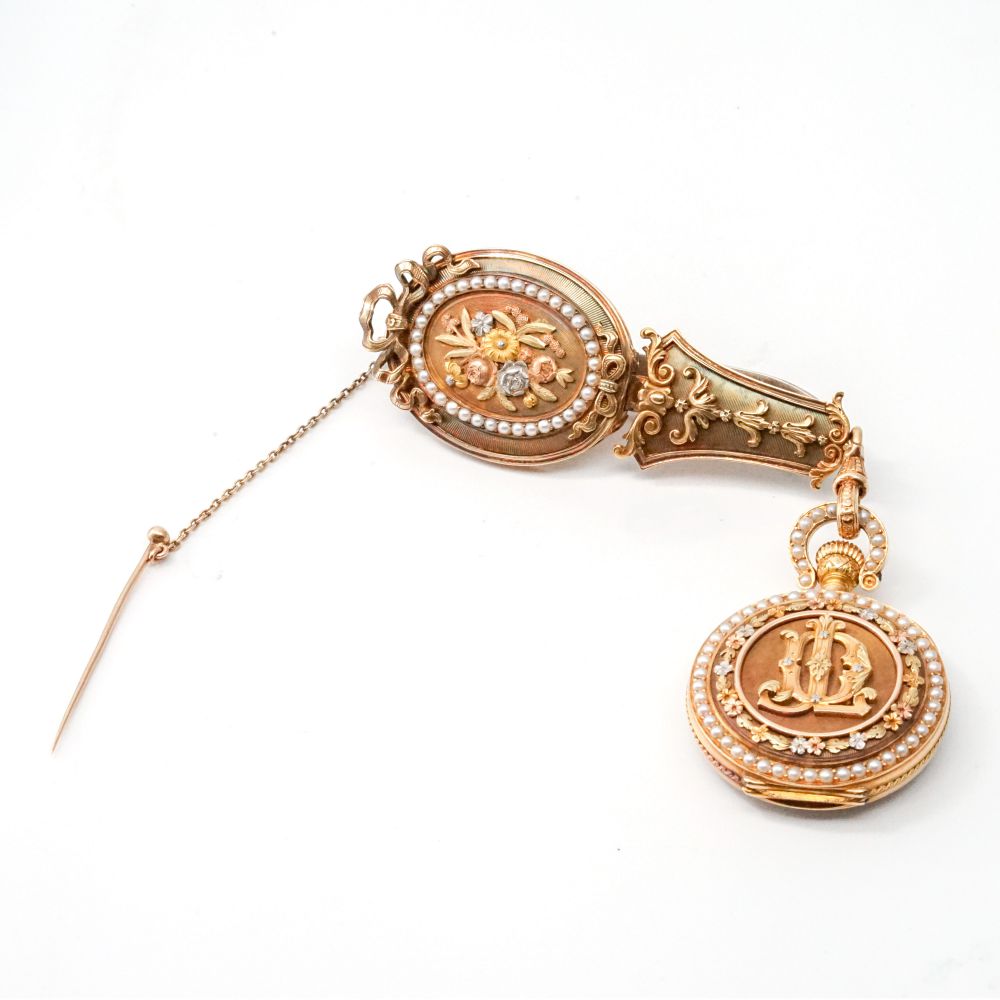19th Century Tricolored Gold Pendant Watch with Pearls
Made circa 1875, signed Le Roy & Fils, 31.5 mm diameter, 18K yellow gold lapel pendant watch, in a neo-classical style with floral, ribbon, and scrolling leaves interpreted in tricolored gold and Repoussé and chasing techniques.
The brooch, case, bezel, and pendant with pearls, a refined and elegant form watch.
The case back is engraved in relief with a floral combination of the letters "JLD", believed to be the initials of the customer. The open-face pocket watch with a white enamel dial, and Roman numerals, houses a gilded brass 11’’’movement with keyless winding, going barrel, cylinder escapement, monometallic balance, and blued steel flat hairspring, polished steel index-regulator. Accompanied with original case.
Functions: Hours and minutes.
A Brief History of Le Roy & Fils (L. Leroy & Cie)
Bazile-Charles Le Roy, son of the watchmaker Bazile Le Roy (1731-1804), started his watchmaking career around 1785, initially in the 60 Galerie de Pierre, Palais Royal, then moving to the 13 & 15 Galerie Montpensie after the French Revolution. According to the record, by 1788, Bazile-Charles Le Roy was already selling 300 pieces of watches per year, 50 of which were made in his workshop, and the quality of his watches was far superior to those of movements and watches imported from Switzerland. He was also a horologer for kings and queens and for many of the nobility of the time, such as Napoleon and his family.
Around 1815, Charles-Louis (1794-c.1865), son of Bazile-Charles, entered the watchmaking business and became a partner in 1827, then the firm's name was officially changed to Le Roy & Fils. In 1834, Charles-Louis was appointed watchmaker to the king and watchmaker to the navy. (" Horloger du Roi" and "Horloger de la Marine".)
In 1845, Charles-Louis Le Roy sold the firm to Casimir Halley Desfontaines on the condition that he and his successor kept the name Le Roy & Fils.
Another interesting thing here is that Charles-Louis Le Roy was an important supporter and customer of Jean Adrien Philippe. Philippe won a bronze medal at the Paris Exposition in 1844 for his improved keyless winding and manual setting system. It was then that Antoine Norbert de Patek met Philippe and invited the talented young watchmaker to collaborate with him. Philippe, who dreamed of setting up a watchmaking career in France, was hesitant to do so, but as Charles-Louis Le Roy sold his company, Philippe eventually chose to leave Paris. And so began a great story for Patek Philippe.
Around 1854, Le Roy & Fils opened a branch at 296 Regent Street in London, England, as Le Roy & Sons, and soon acquired the ownership of No. 211, which was expanded to include No. 211 and 213 in 1875, then moving to 57 Bond Street in 1885.
Around 1879, Louis Leroy, son, and pupil of the famous chronometer maker Théodore-Marie Leroy (watchmaker, 1827-1899), officially joined the firm. (The surname is Leroy here, not Le Roy.)
Louis Leroy became a partner in 1888 when the firm's signature was changed to Ancienne Maison Le Roy & Fils, L. Leroy & Cie. Successeurs. In 1895, Louis Leroy's brother Léon Leroy also joined the firm. In 1899, L. Leroy & Cie moved the firm to Boulevard de la Madeleine, No. 7.
With the solid foundation of the Leroy watchmaking dynasty, Louis also maintained good relations with the famous Swiss watchmakers of that time, including Louis-Benjamin Audemars and Charles Piguet, with whom Le Roy & Fils produced some of the greatest complications of the early 20th century.
After Louis' death, his younger brother Léon continued the business, and after Léon's death, his two sons Pierre and Philippe took over the business. The Leroy brand continues to this day.




